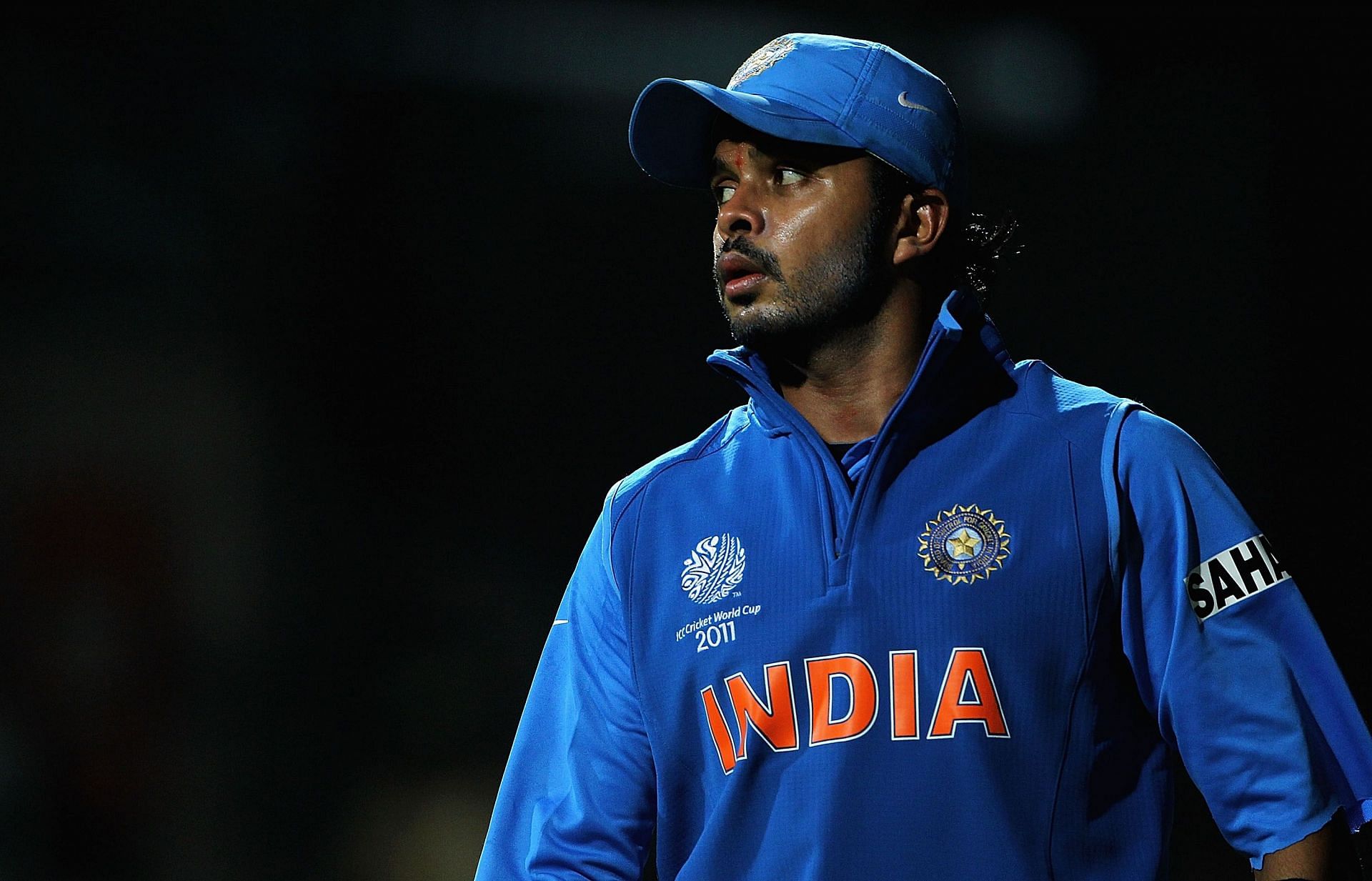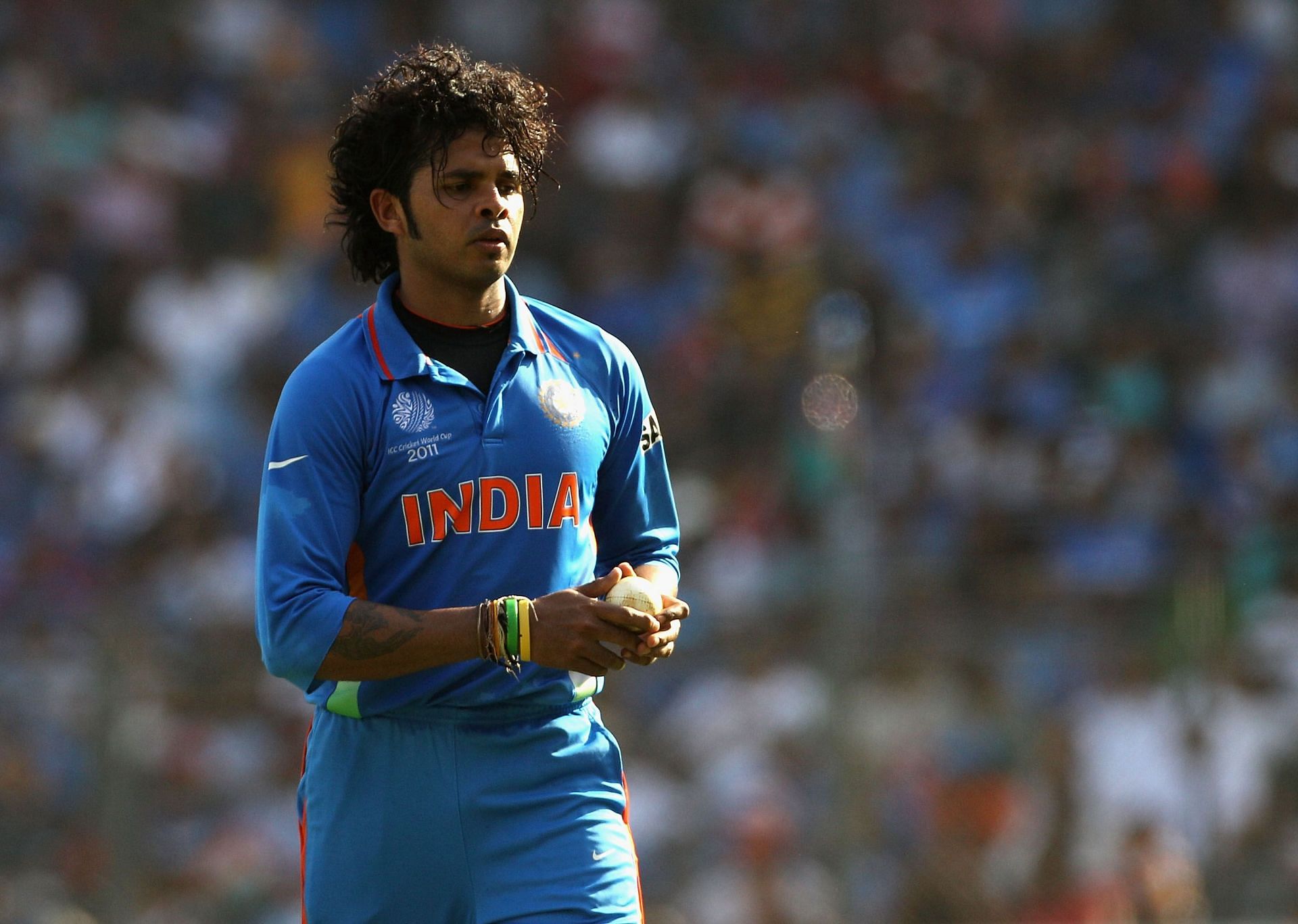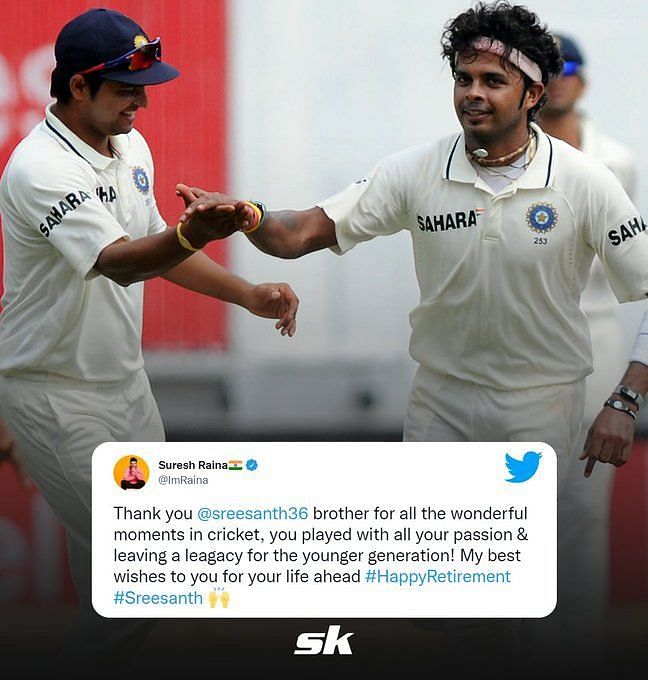
S Sreesanth's career - virtues, vices and very entertaining

December, 2006, India have rocked up on South African shores hoping to quench their thirst for a Test victory in the country. Prior to this series, the Men In Blue have never really come close to doing so. This time, though, there seems to be a bit of optimism, considering they have a near full-strength squad to choose from.
The positivity starts building up as India arrive at Johannesburg – a venue often considered by the Proteas as a fortress. The visitors, however, are brave enough and opt to bat first after winning the toss on what seems a relatively lively surface.
Almost everyone is impressed by the courage India is portraying. They have thrown down the gauntlet to South Africa and seem primed to land the first blow. An indifferent first innings, though, means that they can only muster 249 – a total that isn’t extraordinary but one that will keep them in the game, if they bowl well.
Historically, India haven’t had much success bowling in South Africa. The pitches, which are vastly different to those found at home, have been tough to adapt to. The Men In Blue don’t have any tearaway quick to exploit the bounce, swing and seam on offer.
Thus, once India’s first essay ends, there is probably a bit of trepidation in their ranks. They have been here, and have seen these situations before. And, almost always, they’ve not been able to recover.
South Africa’s batting innings begins with a sedate Zaheer Khan over. The pacer doesn’t pose too many questions and Graeme Smith helps himself to three comfortable runs.
Things, by the way, are supposed to get easier because at the other end, S Sreesanth lies in wait. For those wondering, Sreesanth has only made his Test debut months ago (March 2006) and made his international bow in 2005.
So, this is as much unchartered territory for a young fast bowler as any. Not just because of where he stands in the international arena, but also because there isn’t really a fast-bowling culture in India at that juncture.
The first ball Sreesanth bowls drifts down the leg side and is left alone with the minimal of fuss by Smith. The third delivery slides onto the pads again, and Smith fetches himself two more runs. In an attempt to correct, Sreesanth sprays the fifth ball of the over wide outside off stump.
At that moment, Smith, much like thousands of South African cricket fans, heaves a slight sigh of relief. In the five balls he has faced, there has been nothing worth pondering over, and there are no signs that things will get tougher. And then, just like that, it all changes – even if it makes absolutely no sense.
Sreesanth, who has bowled both sides of the wicket so far, charges towards the popping crease and hurls a sharp delivery that shapes into Smith just enough. The South African captain, who has a tendency to fall over, exposes his pads and gets rapped in front of middle and leg stump. Sreesanth goes up in appeal and the umpire raises his finger too.
Those at the ground, who had just written off India’s chances, suddenly sit up and take notice. A couple of South African fans – fans who have never seen Sreesanth bowl, ask who this kid is – a kid who shows the batter just what he is thinking and is skillful enough to back it up too.
That wicket is followed by another prized scalp, with Hashim Amla biting the dust this time. The drama doesn’t stop there, though. The fast bowler nips out three more batters and helps India bundle South Africa out for 84. Again, it doesn’t make much sense. A greenhorn shouldn’t be ripping a world-class batting unit to shreds. But it happens.
India ultimately win that game (courtesy of three more Sreesanth wickets in the second innings). The major takeaway, however, is not that they have finally won a Test in South Africa. It’s that they, in Sreesanth, have a fast bowler who can stand toe to toe with the biggest gunslingers in the game.
Sreesanth's career arguably saw more lows than highs

Unfortunately for the seamer and for India, such displays remained the glorious aberrations in his career. At the start of his cricketing journey, there were spells that left your mind blown. He would bowl with a bolt-upright seam and get the ball to talk – often leaving the batter and those watching speechless.
A few of his finest hours came in South Africa too. That historic spell at the Wanderers was followed by an equally fiery display against Australia in the semi-final of the T20 World Cup at Durban. In 2011, he defied a flat track and picked up a five-wicket haul, even as South Africa threatened to take the game away from India.
Then there was also an astounding performance at Jamaica against the West Indies – a game where he battered Brian Lara into submission. And, of course, a breathtaking outing against Sri Lanka at Kanpur – a match where he showed that he could make the old ball dance to his tunes as well.
As fate would have it, though, Sreesanth might not be remembered for any of these exploits. He was, like a few international cricketers are, prone to the more than a handful of controversies. That plummeted to its nadir in 2013 when he was convicted of spot-fixing in the IPL while playing for the Rajasthan Royals.
He was subsequently banned for a lifetime and had to plead for the BCCI to reduce his sentence and assimilate him back into the ecosystem. The act, which many consider to be a complete non-negotiable, is what might define his career.
But he, despite that, produced so much more that it would be an injustice if that too isn’t reminisced about, because well, with Sreesanth, the good had to always be taken with the bad. There are no two ways about it too.
Apart from the spot-fixing saga, the fast bowler was also allegedly slapped by Harbhajan Singh during the 2008 edition of the IPL. He had once famously shoulder-barged Michael Vaughan, and had gotten into countless altercations with Andrew Symonds.
The Andre Nel saga was also a tad ugly, especially considering the words that were exchanged. But the lasting image remains that of Sreesanth smacking Nel over his head and then celebrating as if he had won the World Cup.
Some might call it immature and some might even condemn it, saying that an international cricketer ought not to behave in such a manner. Yet, you can’t deny that Sreesanth, even at his worst and most certainly at his best, was a bundle of entertainment.
For a pacer who rose through the ranks almost unnoticed, a case could be made that he got a little carried away with all the fame he garnered. But hey, everyone in life is allowed a few mistakes, right?
There was a time when nobody presented the seam as straight as Sreesanth. He was, even at that juncture, an anomaly in the game – both in terms of the talent and by virtue of the kind of character he was. He had passion. He had moments of madness. He had moments of magic too.
A record of 87 wickets in 27 Tests (at an average of 37.59), a tally of 75 wickets in 53 ODIs at an average of 33.44, doesn’t really stand out. But those who had the privilege of watching him in the flesh would unconditionally argue that he was as talented (if not more) than the likes of Jasprit Bumrah, Mohammad Shami and Mohammed Siraj.
From that standpoint alone, it is a bit of a travesty that his career wound up like it did. With Sreesanth, though, the good was never present without the bad. And the bad was never present without hope that things can be alright again. It was, simply put, a topsy-turvy career glittered with terrific troughs and intermittent crescendos.
He had everything in his arsenal to become a bona-fide Indian legend. He was talented, he had bags of potential and tons of ability. However, he was too expressive, and was too confrontational at times. He was volatile but he was box office as well. And when he was in his pomp, he was a sight to behold.
All of the above statements seem paradoxical, especially when mentioned in the same breath. How can someone be so special and yet be such a polarizing figure?
Read the entire thing again. And, this time, it will make sense.
